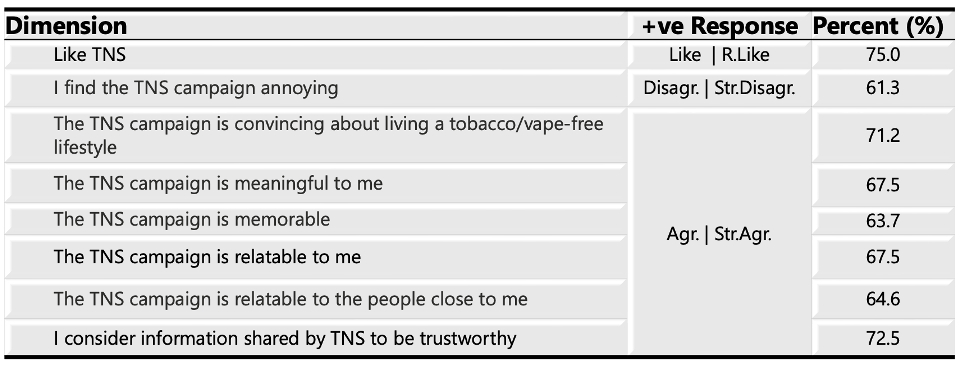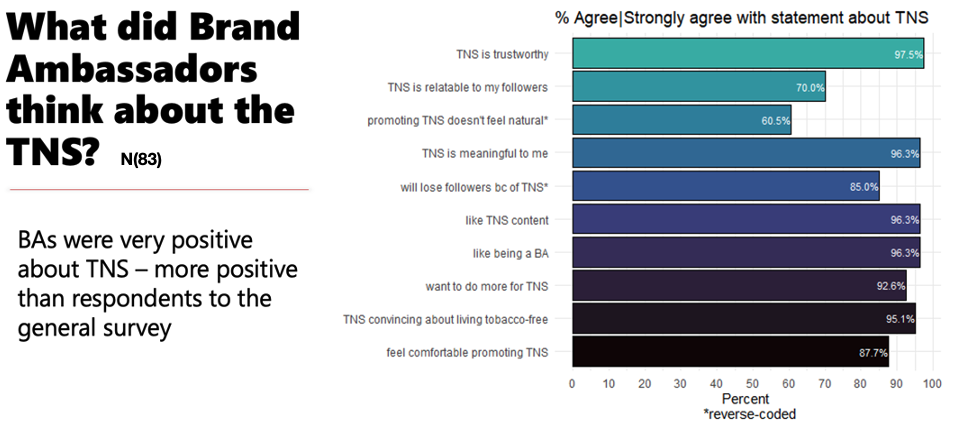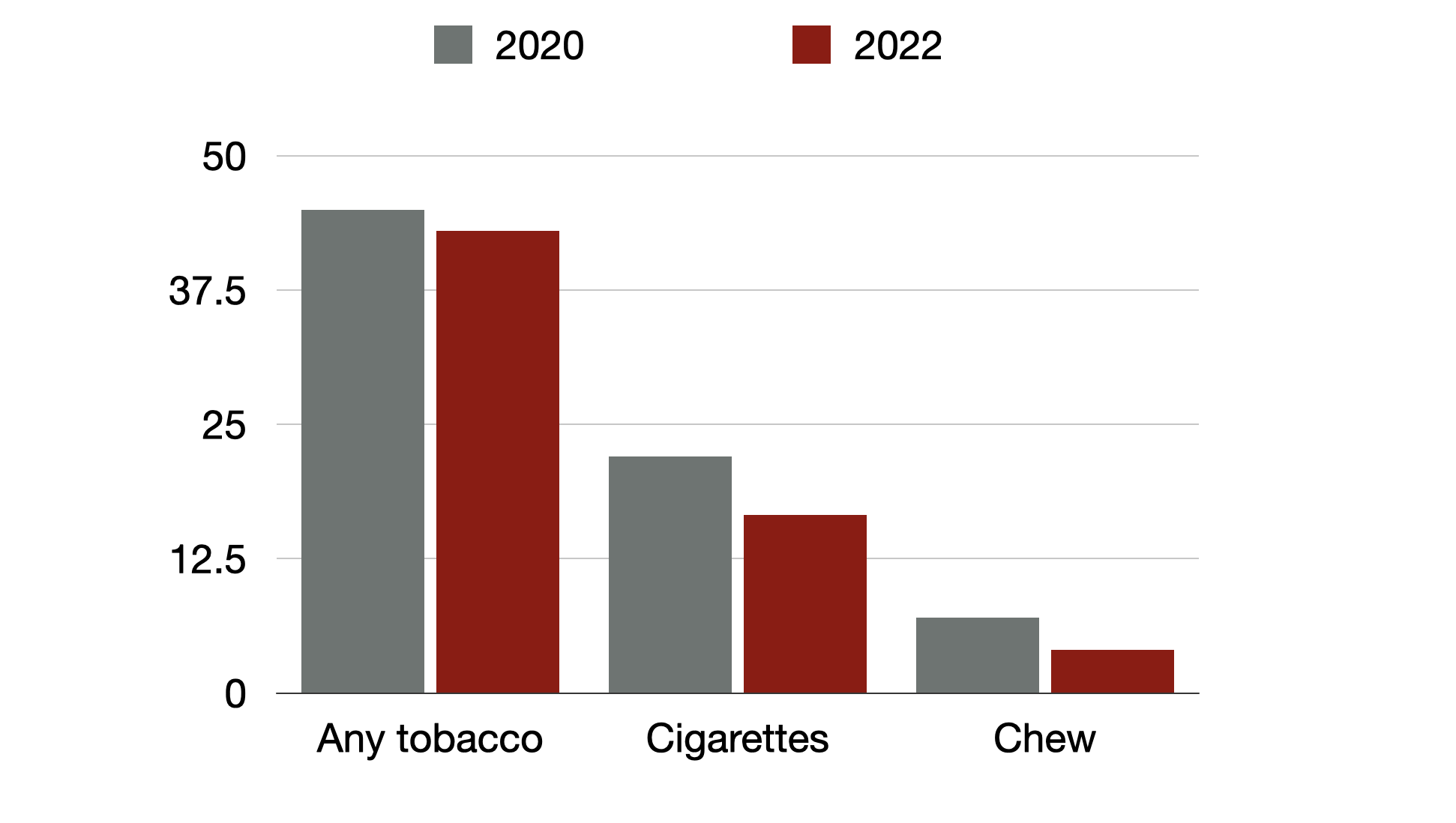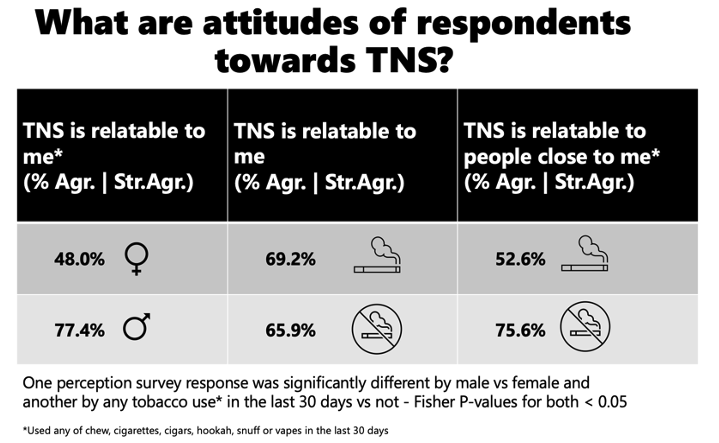This tobacco prevention campaign was specifically designed to appeal to young adults who value living an outdoor, generally more rural lifestyle because research indicated this group is more likely to use tobacco than other young people in Ontario.
To shift attitudes and perceived norms related to tobacco use among the target population, True North Strong associates the group’s values and identity with a tobacco-free lifestyle.
You don’t need to engage influencers with thousands of followers to shift norms and drive change. Even if they only have a few hundred followers, regular people who embody the primary audience characteristics, can drive shifts in tobacco attitudes and behaviours, especially in smaller towns where peer influence is more heavily felt.
The following key findings are from an online survey conducted at the end of 2022 (n = 272) and a survey of campaign ambassadors (n = 83).

37% of respondents were aware of the campaign, however in the regions where the campaign has been active since 2020, over 47% were aware.

The majority of survey responses about the campaign were positive. In regions that received a larger and longer intervention dose, participants reported higher rates of trust towards the campaign (94% Northern region, and 81% Eastern region) compared to regions where the campaign has only been active since mid 2022 (50-70%).

The campaign has more than 150 brand ambassadors. Survey results from this group indicate a high degree of affinity towards the campaign and willingness to support it, which is crucial to shifting behavioural norms.

Led by changes in the two tobacco products the campaign primarily focuses on, past 30-day use rates decreased between the 2020 and 2022 surveys. Rates of cigarette use dropped from 22% to 16.6%.

It is rare to find a tobacco prevention campaign that is highly relatable and liked by the audience it is trying to affect. Nearly 70% of tobacco users reported that they found the campaign relatable, which is crucial to driving behaviour change.